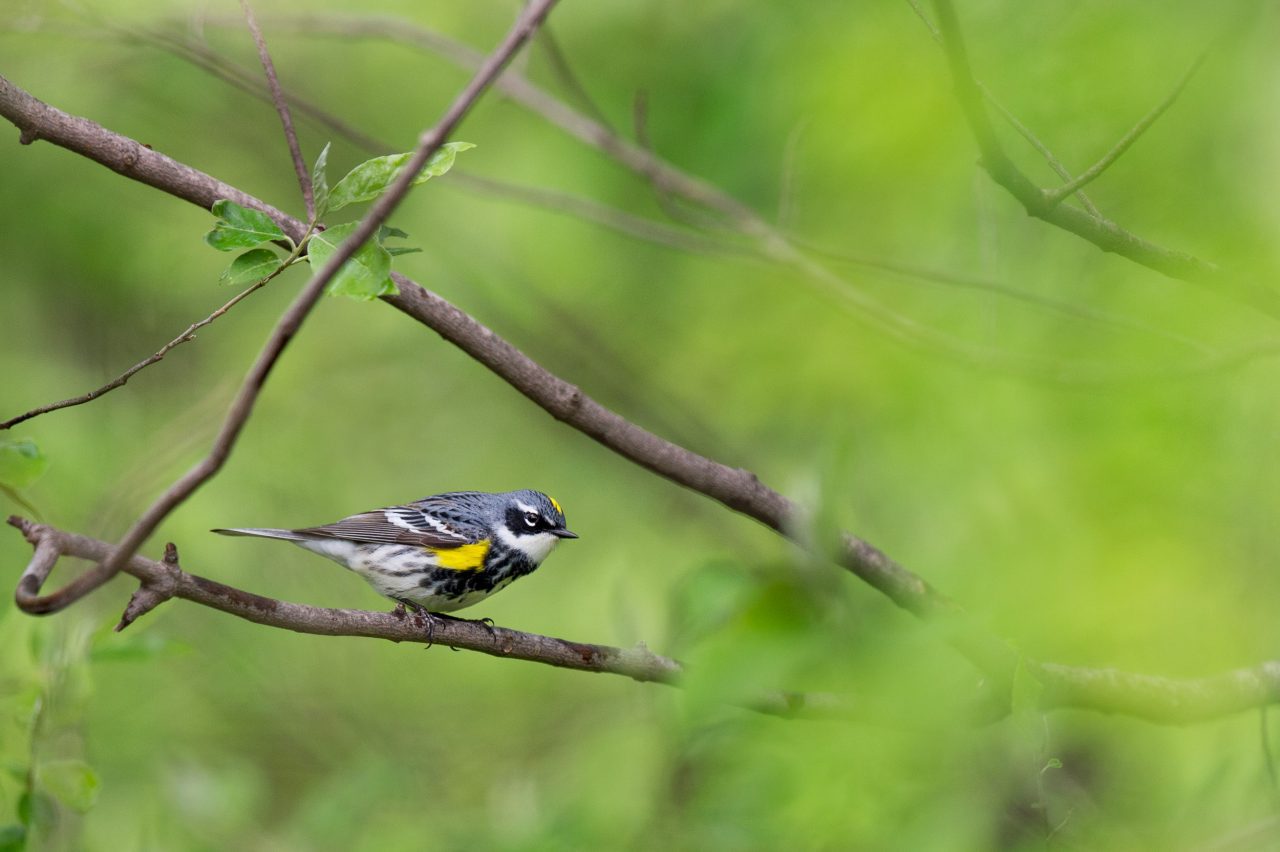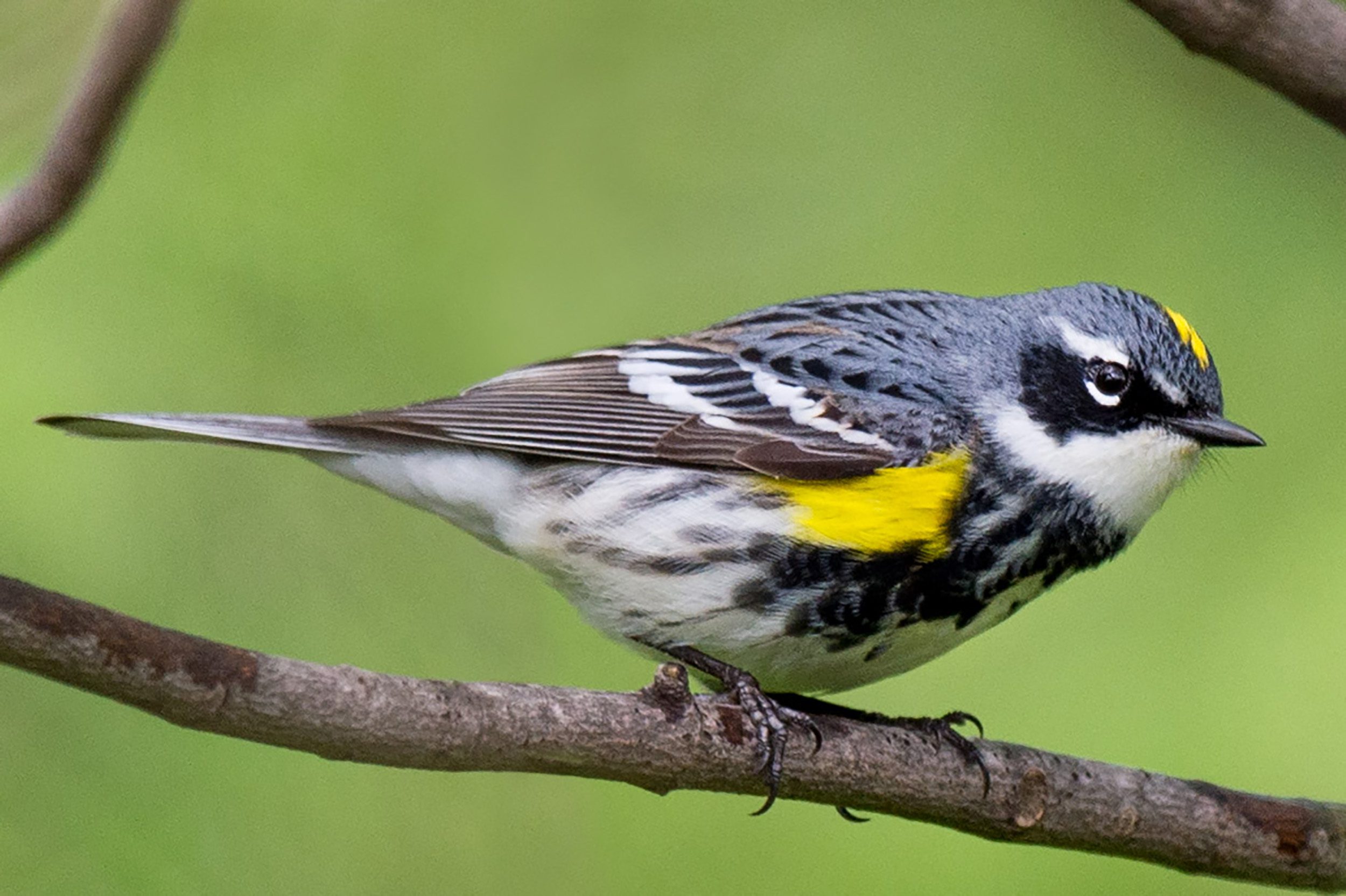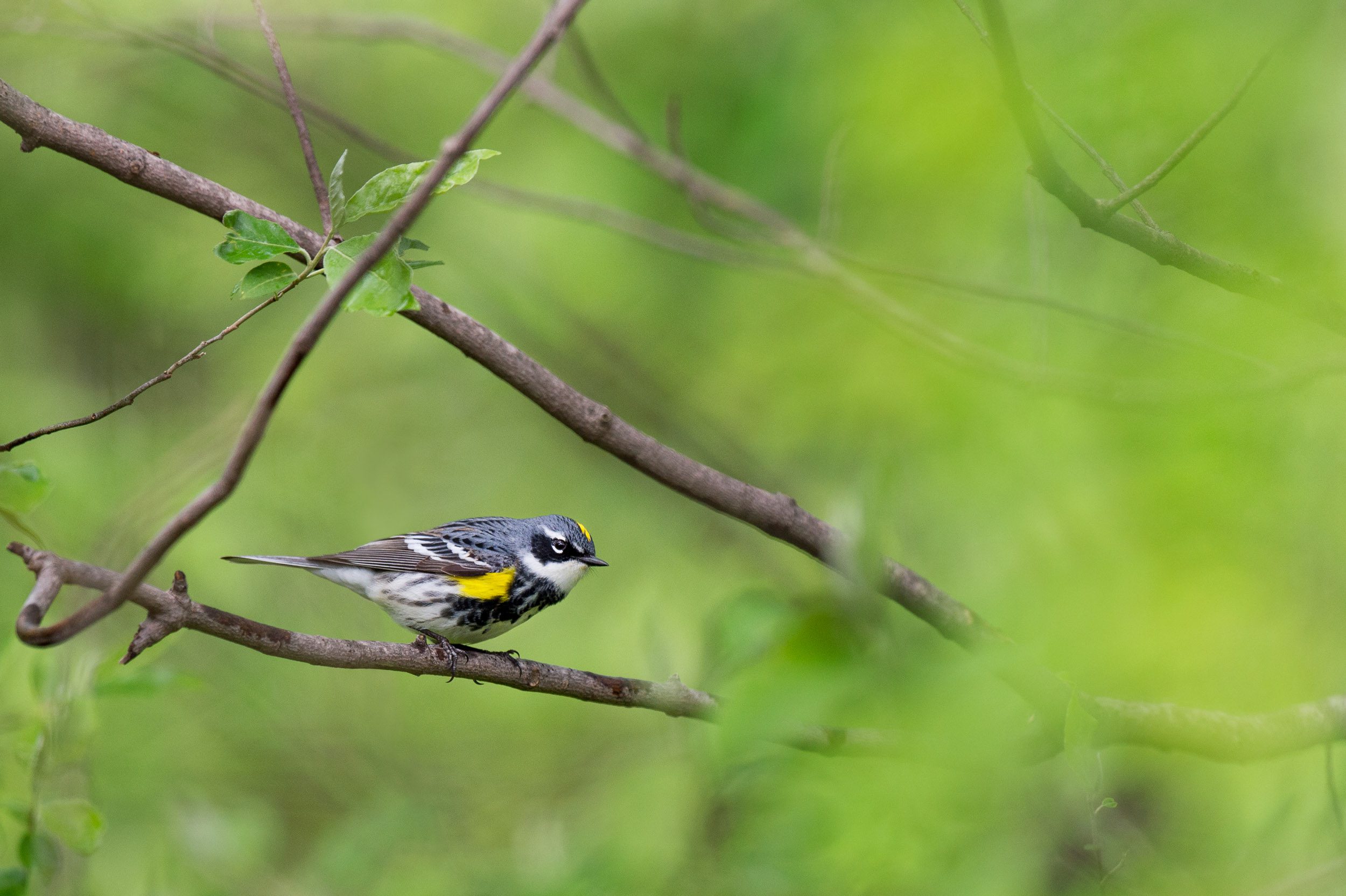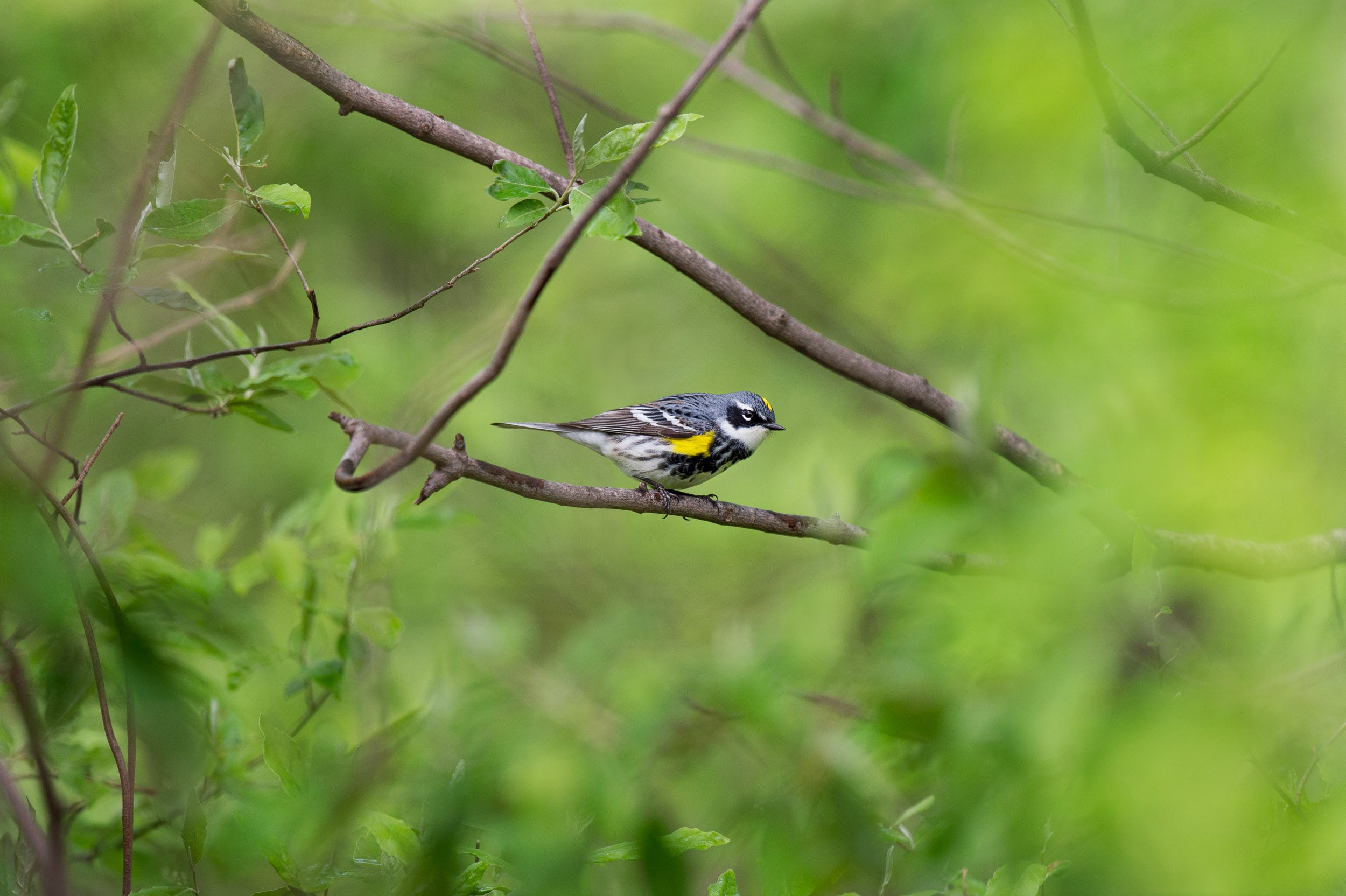Tips for Great Bird Photos: Don’t Crop Too Closely
By Ray Hennessy
April 11, 2017
Bird photography is more accessible than it’s ever been. Digital cameras feature great zoom, image stabilization, automatic exposure, and burst shooting modes. They also have megapixels galore, giving you room to crop in and get closer to your subject than your lens might otherwise allow. But as you work on getting that perfect bird photo, try taking a second look at your cropping technique to make sure you include a little habitat.

The allure of close cropping is understandable: it can really show off the colors and details of the bird you worked so hard to get. But while this is a great way to highlight just the bird, it can deprive your shot of context and make the frame feel crowded.
On a beautiful spring day, while walking around the small patch of woods just outside my home in southern New Jersey, I had the chance to photograph migrating Yellow-rumped Warblers. When I got home, I first tried a close crop like this one. It certainly shows off the bird’s beautiful colors—the tiny splashes of yellow, the dark face mask and contrasting white eyebrow—but there is not much context other than a couple of branches and a smooth green background. As the viewer I can tell it’s in a forest but what kind of forest? What is the bird doing? These questions can often be answered by including more habitat when cropping, and this can allow more feeling into your photos.

In my second crop I moved out enough to include some leaves in focus as well as the complete triangle frame of branches around the bird. By doing this I also gave the bird more breathing room in the frame. The additional green space emphasizes the dense forest the bird is perched in and the extra branches on the top right are soft enough to not be distracting. My eye still goes directly to the bird first, but then explores the surrounding area. I can imagine the bird is about to quickly grab a tiny insect or jump to a nearby branch. This crop also helps to move the bird from the center of the frame which can often give you a more pleasing composition. Overall I think this works much better and changes the intention of the photo from a documentary shot that’s all about the bird to a more creative approach that’s also about the moment and scene.

Lastly I tried a version cropped out even farther. While this includes even more habitat, the bird is starting to get lost in the image. More branches and leaves are in focus on the left, and they really pull my eye away from the bird. The bird is also very small in the frame now and it becomes more difficult to see the wonderful coloration of this handsome warbler, like the patterns of blue-gray and black in the feathers of the back. This crop also puts the bird right back in the center of the frame, which I feel is less pleasing than the previous offset composition.
When deciding on a final crop for an image my goal is always to include as much habitat as possible while maintaining the viewer’s focus on the bird. When I crop too closely I lose the sense of place for the bird, and when I crop too far away the bird can get lost in the space. It takes practice to figure out what works, but I highly suggest resisting the temptation to crop as closely as possible on your next photo. Give the habitat a chance to be part of the photo, and see if you like the result.
Ray Hennessy is a professional wedding photographer who has been enjoying birding and bird photography for just over a decade. He says he has become a much more serious bird photographer within the past 5 years. He grew up and lives in southern New Jersey, which is where he does most of his bird photography.
Photo details: Shot with a Nikon D4s and a Nikon 500 mm f/4 lens. Shutter speed: 1/640 second; aperture: f/5.6; auto-ISO: 900; aperture priority mode.

All About Birds
is a free resource
Available for everyone,
funded by donors like you
American Kestrel by Blair Dudeck / Macaulay Library
